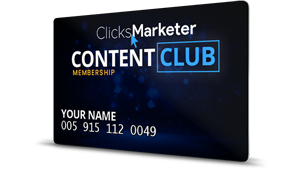Bing Places gives businesses a shot at showing up in local search results, but honestly, just making a listing isn’t enough. If you want to actually get noticed, you’ve got to optimize your Bing Places profile with schema, solid SEO, and landing pages that don’t make people bounce.
Dialing in these elements helps Bing figure out what you’re about and how to display your info. Better structure means better rankings and (hopefully) happier customers.

Schema markup, for example, gives search engines some much-needed clarity. On-page SEO and technical tweaks shape how your content fares in Bing’s algorithm.
Landing pages crafted with Bing in mind don’t just boost your rankings—they can nudge visitors to take action, whether that’s a call, a click, or something else.
Backlinks, social buzz, and keeping an eye on analytics all factor in too. If you treat Bing optimization as an ongoing thing, not just a one-and-done, you’ll set yourself up for better search performance over time.
Optimizing Bing Places Listings

Accurate business info, eye-catching visuals, and actually responding to customer feedback—these are the basics for a Bing Places listing that stands out. Each piece helps with visibility, credibility, and your local SEO punch.
Claiming and Verifying Your Bing Places for Business
First things first: you’ve got to claim your Bing Places for Business profile if you want to be in control. That means logging into the Bing Places dashboard and searching for your business by name or address.
If your listing is already floating around out there, you can request ownership. If not, time to create a new one from scratch.
Before any edits show up for the world to see, you need to verify your listing. Bing usually lets you do this by phone, text, email, or even postcard (yep, snail mail still exists).
Which method you get depends on your business type and location. No verification, no updates—simple as that.
Consistency is a big deal. Your Name, Address, and Phone number (NAP) should match exactly everywhere—your website, directories, you name it. If Bing gets mixed signals, your local SEO can take a hit.
Enhancing Business Information and Visuals
Once you’re verified, flesh out your listing with all the details. We’re talking business hours, categories, your website URL, services—don’t skimp.
Picking the right categories helps Bing “get” what you do, which boosts your chances of showing up for the right searches.
Photos matter—a lot. Upload sharp images of your storefront, inside shots, products, even your team. Logos and cover photos help keep your branding on point across Bing and beyond.
Don’t forget to keep images fresh, clear, and the right size.
Little extras like holiday hours, payment options, or appointment links make life easier for your customers. A well-kept Bing Places listing means people find what they need fast, and that can turn into real-world visits or sales.
Managing Customer Reviews for Local SEO
Customer reviews on Bing Places can seriously impact your visibility and trust factor. Good reviews tell Bing you’re the real deal.
Encourage happy customers to leave feedback—maybe through follow-up emails, receipts, or even a direct link. Just keep it genuine; fake reviews are a no-go and Bing will catch on.
Stay on top of your reviews and reply—yes, even to the tough ones. A thoughtful response (not just a copy-paste job) shows you care, which builds trust and gives your local SEO a nice little boost.
Schema Markup and Structured Data for Bing

Schema markup is like giving Bing a cheat sheet for your website. Using schema.org standards, you help your business pop up in search results and catch more local eyeballs.
Implementing Schema.org with JSON-LD and Microdata
Schema.org comes in a couple of flavors—JSON-LD and Microdata are the big ones. JSON-LD is basically a chunk of JavaScript you drop into your page (usually in the header), so it doesn’t mess with your design.
Microdata, on the other hand, gets woven right into your HTML tags.
Bing tends to prefer JSON-LD—it keeps things tidy and less error-prone when you’re tweaking your site. Microdata isn’t bad for simple setups, but JSON-LD is just easier to manage.
A basic JSON-LD script for a local business might include:
- @context: “https://schema.org“
- @type: “LocalBusiness”
- name, address, telephone, openingHours
Stick with schema.org markup and Bing will have a much easier time matching your website to your Bing Places listing.
Leveraging Structured Data for Rich Snippets
Structured data can make your search results stand out with rich snippets—think ratings, reviews, business hours, or events right there in Bing’s results.
People love seeing info at a glance. For example, a restaurant with schema can show star ratings, menu highlights, or reservation links—pretty handy.
Bing recognizes schema.org for all sorts of stuff:
- Products (price, in stock, etc.)
- Events (date, where, what’s happening)
- Articles (headline, author)
- LocalBusiness (contact, hours)
Get your structured data right, and Bing might just pull your best info straight into the search page. Test your markup with Bing Webmaster Tools to make sure it’s working.
Best Practices for Local Business Schema
Local businesses get the most out of schema when they spotlight location, contact info, and what they offer. The LocalBusiness schema is your friend here.
Key fields to fill out:
- name
- address (street, city, region, postal code, country)
- telephone
- openingHours
- geo (latitude and longitude)
Double-check that your schema data matches everywhere—Bing Places, Google Business Profile, your website. Any mismatch can throw off trust signals and leave your listing half-baked.
Adding reviews and ratings to your structured data can help too. If Bing spots this, it might show it in search results, making it easier for folks to size up your business fast.
On-Page SEO Strategies for Bing
Bing looks at how well your pages answer what people are searching for—user intent, keyword matches, and how clear your content is. Titles, metadata, and even your images all play a part in getting you noticed.
Optimizing Title Tags and Meta Descriptions
Title tags are your headline for Bing. Put your main keyword near the start, keep it under 60 characters, and don’t just stuff in keywords—make it sound like a human wrote it.
Meta descriptions show up as your preview in search. Shoot for 150–160 characters and use language that nudges people to click. Sprinkle in secondary keywords if you can, but don’t make it awkward.
Quick checklist:
- Title tags: short, keyword up front, unique for every page
- Meta descriptions: clear, enticing, actually match the page
- Meta tags: line up with your content, no copy-pasting across pages
Exact-Match and Long-Tail Keyword Targeting
Bing’s a bit old-school and likes exact-match keywords more than Google does. Using the exact phrase people search for in your headings, title, and first paragraph can give you a bump—just don’t overdo it.
Long-tail keywords catch people who know exactly what they want. They convert better, too. Like, “affordable Italian restaurants in Dallas” will work harder for you than just “Italian restaurants.”
Some tips:
- Drop long-tail phrases into H2s or H3s
- Use exact-match keywords here and there in your text, but keep it natural
- Consider making special landing pages for really specific searches
Enhancing Multimedia Content and Alt Text
Bing pays attention to your images, videos, and graphics. If you optimize them, you’ll get a bit more search love. Give your image files real names (not just image1.jpg) that use keywords.
Alt text tells Bing what’s in the image. Make it short, clear, and tied to your topic—“blue running shoes for men” beats just “shoes.”
A few more ideas:
- Compress images so your pages load faster
- Add captions if the image is important to your message
- Embed videos with schema markup to help Bing find them
Technical SEO Essentials for Bing
Technical SEO is about making sure Bing can actually get to and understand your content. Sitemaps, fast sites, and letting Bingbot roam where it needs—these are the nuts and bolts.
Submitting and Optimizing XML Sitemaps
An XML sitemap is like a roadmap for Bing. Submit it through Bing Webmaster Tools so the search engine knows what pages matter.
Keep your sitemap clean—no broken, duplicate, or redirected URLs.
If your site is huge, break the sitemap into chunks (under 50,000 URLs or 50MB each) and use .gz compression if needed. Stick to canonical URLs to avoid confusion.
For sites that change a lot, use tools to auto-generate sitemaps so new and removed pages are always up to date. Check your submissions in Bing Webmaster Tools to catch any crawl errors.
Improving Page Load Speed and Mobile Friendliness
Page speed matters—a slow site will get dinged by Bing and annoy your visitors. Speed things up by tweaking your server, compressing images, and enabling browser caching.
Mobile is huge. Bing uses a mobile-first lens, so your site needs to look good and work smoothly on phones and tablets. Test with Bing’s Mobile Friendliness Test Tool to spot any issues.
If you’re feeling ambitious, try AMP (Accelerated Mobile Pages) for even faster loads on mobile. Not required, but it can help. Fast, responsive design is the goal.
Ensuring Proper Indexing and Crawlability
Bing has to crawl your site to index it. Make sure Bingbot can access important files—don’t block CSS or JavaScript in robots.txt unless you have a really good reason.
Use robots.txt and meta robots tags to steer Bing’s crawlers. Let them index the good stuff; keep thin or duplicate pages out. Canonical tags help Bing know which version of a page to show.
Keep an eye on crawl stats in Bing Webmaster Tools to see how often Bingbot visits and if it’s running into issues. Site audit tools like Screaming Frog can help you spot broken links, weird redirects, or orphan pages that might be getting ignored.
And hey, check your server logs now and then to see if Bingbot is running into roadblocks or unnecessary detours.
Backlinks, Social Signals, and Domain Authority
Getting seen in search isn’t just about your own site—Bing wants to see that others trust you, too. Backlinks from legit sites, social media buzz, and your overall domain authority all count.
Building a High-Quality Backlink Profile
A strong backlink profile tells Bing you’re worth ranking. It’s not about quantity—it’s about getting links from sites that matter in your industry or local area.
Shoot for links from respected directories, industry publications, or local partners. A link from your chamber of commerce is worth way more than a random blog.
Keep tabs on your backlinks. Use Bing Webmaster Tools or other platforms to spot and clean up any toxic links. Disavow spammy stuff to keep your reputation clean.
Best bets:
- Go for relevance, not just numbers
- Try to earn editorial links (not just user-generated junk)
- Audit your links every few months
- Skip the shady link schemes or paid networks
Leveraging Social Media Engagement
Social media activity doesn’t directly move Bing’s algorithm, but it does help people find you and can lead to more natural backlinks.
Content that gets shared or talked about is more likely to get picked up by bloggers, journalists, or other businesses. That ripple effect can boost your authority over time.
Post regularly and tailor your content to each platform. LinkedIn is great for business insights; Twitter is all about quick, punchy updates.
Some practical moves:
- Share blog posts and landing pages with headlines that grab attention
- Use hashtags to reach a wider audience
- Get your team and partners to interact with your posts
- Watch your engagement numbers and tweak your strategy as you go
Boosting Domain Authority for Bing Rankings
Domain authority, in a nutshell, is about how strong your website looks in the eyes of search engines. It’s a mix of things: backlink quality, trustworthiness, and whether your content actually matters to people. Bing doesn’t use the same score you might see in third-party tools, but it definitely pays attention to authority signals when ranking pages.
Getting that authority up isn’t a one-and-done deal. You’ve got to work across the board—think backlinks, sure, but also technical SEO, making your site speedy, and making sure it works on phones (because, let’s face it, everyone’s on their phone).
Sites that have real authority usually show up more often for the tough, competitive keywords. Plus, Bing tends to index their new stuff faster.
Actions that support authority growth include:
- Publishing authoritative, well-researched content
- Building relationships for natural link acquisition
- Strengthening site security with HTTPS
- Keeping content updated and accurate
Monitoring, Analytics, and Ongoing Optimization
If you’re not tracking how your site’s doing, you’re flying blind. Analytics, search tools, and a habit of tweaking things based on real data—that’s how businesses get an edge with Bing SEO. It’s not just about rankings; it’s about seeing how people actually interact with your pages and listings.
Using Bing Webmaster Tools for Performance Tracking
Bing Webmaster Tools is your backstage pass to see what’s really happening with your site in Bing search. You get numbers on impressions, clicks, and whether your pages are making it into the index. Super helpful for figuring out if Bing’s even seeing your stuff, let alone ranking it.
You’ll also get flagged for technical problems—crawl errors, duplicate content, mobile issues. Squashing these bugs can make a real difference in how visible you are in Bing’s search results.
Reports you can dig into with Bing Webmaster Tools:
- Search Performance: Clicks, impressions, and average position.
- URL Inspection: Indexing status and crawl details.
- SEO Reports: On-page optimization suggestions.
- Backlinks: Referring domains and anchor text analysis.
Check these reports regularly. It’s the only way to know if your tweaks—whether it’s schema, landing pages, or metadata—are actually moving the needle for your Bing visibility.
Analyzing Click-Through Rate and SERPs
Click-through rate (CTR) is one of those numbers you can’t ignore. It’s how often people actually click your link after seeing it in search. Low CTR? Well, maybe your title tag or meta description is just… meh. Or maybe your structured data isn’t showing off what matters.
Watching CTR in Bing Webmaster Tools helps you see which keywords and landing pages are grabbing attention, and which ones are just taking up space. If you’re ranking high but nobody’s clicking, it’s a wake-up call to rework those snippets.
Here’s what really moves the needle for CTR in Bing’s search results:
- Title tags with clear keywords.
- Meta descriptions that match what’s on the page.
- Rich snippets using schema markup.
- Relevance to Microsoft Edge users—they sometimes search a bit differently than the Chrome crowd.
Honestly, boosting CTR is one of the fastest ways to get more organic traffic. Bing notices when people like your result, and that can only help.
Adapting SEO Strategies with Data Insights
Data from Bing Webmaster Tools, third-party platforms like Alexa, and analytics software should guide ongoing SEO adjustments. Why guess when you can actually see what’s working?
If you notice a dip in visibility for certain queries, it might be time to tweak your landing page content or mess with the schema markup. On the other hand, spotting keywords with high CTR but low rankings? That’s basically a neon sign pointing to fresh optimization opportunities.
Effective Bing SEO is really about rolling with the punches—constant testing, a bit of trial and error. Teams can:
- Track seasonal shifts in search demand.
- Compare Bing results against other search engines.
And don’t forget to adjust on-page SEO tips based on those subtle user intent signals.
Honestly, sticking close to what real users are doing keeps you relevant in Bing search results. That’s how you keep organic traffic coming in, even when the algorithm throws you a curveball.



